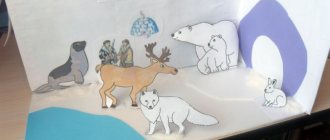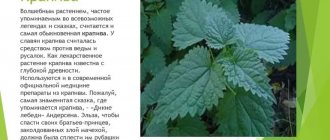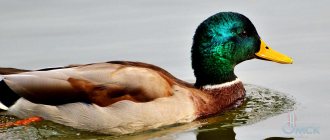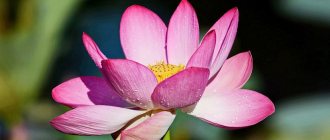Presentation “Red Book of Russia”
2017
Capercaillie
In nature, there are many species of birds from the pheasant family. One of the most famous species in our country is a bird called the wood grouse. This bird is quite large - in size it is comparable to a turkey. The male's head and tail are black, while the female has variegated plumage with shades of yellow, red and brown. The capercaillie lives in coniferous forests of both the European and Asian parts of our country. In winter, these birds prefer spruce forests, because the main type of their winter food is spruce needles.
Sing, wood grouse, sing
Wood grouse hide from frost in snowdrifts, but prefer to sleep in trees. Their strong paws are able to hold securely on icy spruce branches. In winter, wood grouse live alone, rarely gathering in small flocks. But closer to spring they begin to gather on the leks. Tokovishche is a special place in the forest for wood grouse, where males sing songs for females and perform dances for them. If a female finds one of the males attractive, she calls him with a response song. Mating among wood grouse usually takes place peacefully, but it happens that two males simultaneously accept the female’s call and then a fight begins between them. They jump on each other, flap their wings and scream loudly, not noticing anything around them. And the female at this time leaves the mating area with the third chosen one. She's not into fighting!
Deaf grouse
During mating, the capercaillie, at a certain moment in the performance of its song, completely loses its hearing for a few seconds, for which this bird was nicknamed the capercaillie. Hunters use this feature of the bird to get closer to their prey. Hunting for wood grouse has always been very popular. It got to the point that in Great Britain this bird was completely exterminated. And only after some time, it was possible to restore the population of wood grouse in this country due to individuals brought from other countries.
Grow up, kids.
Male wood grouse do not take any part in raising chicks. After a period of mating, they begin to molt, the plumage changes, and the bird cannot fly for some time. Therefore, during the molting period, males reliably hide in remote places of the forest.
Only the female capercaillie is engaged in raising offspring. She herself looks for a place for a nest, lays eggs and patiently incubates them. Moreover, she takes this process so responsibly that at the last stage of hatching she can be picked up with her bare hands. After the chicks appear, mommy’s worries increase. She often has to take her family in search of food. Little wood grouse need animal food - bugs, worms and various forest insects. To quench their thirst, they eat succulent plant stems. As the chicks grow older, they switch to plant foods. They really like berries, especially lingonberries. When all the offspring master the art of flight, young wood grouse begin to get their food in the fields and aspen forests, plucking leaves from the aspen trees. Mature capercaillie chicks eventually leave their family and begin an independent life. Ahead of them is the first winter of their lives, which they will spend in deep spruce forests, eating only pine needles.
Cormorant bird.
Just before dawn breaks, old Li-fu is already on his feet. The poor Chinese can't sleep. The rich can do this, but he can’t. If he doesn't get up early, he and his little granddaughter Lee-En-Bong will be left without bread and rice. Taking his constant assistants - cormorants, Li-fu heads along a narrow path to the sea. The city wakes up behind.
The sun was already rising when Li-fu pushed his light bamboo raft away from the shore. On the edge of the raft, squatting on short legs, lazily moving their heads, cormorants looked into the water. Near the familiar shallows, Li-fu stopped the raft. Having placed a rope ring around the neck of each of the cormorants, the old man commanded:
- Well, let's get to work...
One after another, the cormorants jumped into the water. Soon one of them surfaced with a fish in its beak. It was clear that the bird was trying to swallow its prey, but the ring around the cormorant’s neck did not let the fish through. Convinced that he would not be able to profit, the cormorant swam to the raft. Li-fu picked up the bird and the fish and pulled them out of the water. He did the same with other birds. Having taken the fish from them and removed the rings from their necks, the old man gave the cormorants some food - a piece of fish each as a reward for their work. And then he again hastily sent his fishermen into the water: they needed to catch more fish and also get them to the morning market... This is how tame cormorants work for humans. Nowadays in China there are fewer and fewer fishermen who catch fish with the help of birds.
Cormorants are relatively large birds from the order copepods. They are always near water, near the seas, lakes and rivers of Southern Europe, South Asia, North Africa. Our cormorants live in the Far East and in the southern regions of the country. There are many of them in the Volga delta. The food of cormorants is fish. Cormorants spend whole days on the water, diving for prey, which they eat in huge quantities. Having caught a fish underwater, the cormorant rises to the surface with it and, throwing it into the air, swallows it from its head. Such a “juggler” never makes mistakes. The voracity of cormorants is extraordinary.
Sable
When the word “sable” is pronounced, one immediately imagines a brave and dexterous animal, the main advantage of which is its valuable, fluffy, thick fur. The sable belongs to the mustelidae family. This family includes otter, wolverine, and badger.
Once upon a time, the sable lived freely in the territories of central latitudes, in European forests, and in Siberia. It was from Siberia that huge quantities of high-quality, valuable skins were exported. The hunting of animals in ancient times was intensive. And the result was not long in coming. Valuable animals became fewer and fewer, and the skins increased in price more and more. Now the sable is under state protection.
The sable is a small animal. Its body length is on average 55 cm, and its tail is up to 20 cm. Weight is about 1.5 kg. The sable is a typical predatory animal. Squirrels and hares are the preferred delicacy for animals; birds come in second place - hazel grouse, capercaillie, red-backed vole, pika. The sable is attached to a certain territory. Going somewhere tens of kilometers away from your “hunting ground” is not in the rules of this animal. The sable nimbly climbs trees, but prefers to live and hunt on the ground. In winter, he does not like to move in the snow. The sable has excellent hearing - when it hears the squeak of a mouse, it dives into the snow and deftly finds and grabs its prey under the snow. Currently, the territories where sable is found are quite extensive: from the Urals to the Pacific coast, as well as the Japanese island of Hokkaido. The animal makes the nest where the sables appear either in a tree or in someone’s hole on the ground, for example, under a fallen tree. The male and female are good parents. They raise their numerous offspring (3 - 5 - 7 sables), born in the spring, together. By the end of summer, the cubs become completely independent.
Otter
Otter
Otter lives in
near fast mountain rivers with strong currents and hunts river trout. The otter is a local resident, unlike other mammals - river inhabitants such as nutria and beavers; it has lived side by side with humans since ancient times throughout the world, except Australia and Antarctica.
The flexible, elongated body of the otter is covered with shiny brown fur, the tail is long and muscular, and the body of this representative of the mustelid family, as a result of evolution, acquired special capabilities in the form of swimming membranes on the paws.
Over many years of evolution, otters not only stopped being afraid of water, but also learned to dive, remaining under water for up to 4-5 minutes, while their nostrils and ears close.
Secretive and cautious animals hunt fish at night; they also do not disdain frogs and mollusks. To open the shell and get a tasty mollusk, the otter turns over on its back right in the water, puts a stone on its stomach and breaks the shells.
Otter at home
These and other unusual otter
acquired over many years of living
at home
next to a person.
Otters are easily tamed in captivity and are very friendly to people.
There are many tales and legends about the otter Even 600 years ago, Mark Polo in his writings described how in China, local residents living along the banks of the Yangtze River caught fish with the help of otters.
Children about animals otters
Young otter puppies are easy to train, and it is striking that their habits and customs are similar to both cats and dogs. The otter, like a cat, tramples on the chest of its owner, calming him, and like a dog rushes to his defense, biting enemies, including humans, when in danger.
Of course, an otter living in the wild, like any animal, protects its home and offspring to the point of self-oblivion, but in an ordinary home environment, an otter does not attack a person
and is not dangerous to humans.
It is a pity that industrial pollution of rivers, deforestation and poaching of otters for their valuable fur leads to the fact that these charming, dexterous and hardy animals are becoming fewer and fewer.
Roe deer
Roe deer is one of the most beautiful and graceful animals. This is a small deer with a short body, slightly reminiscent of a goat. In summer, roe deer are golden-red in color, and in winter their color changes to gray. Roe deer have a blunt muzzle and a very short tail. There is light fur under the tail. Sensing danger, roe deer lift their tail high, the white spot is clearly visible to those running behind. Hunters call this spot a white mirror.
Newborn roe deer have a spotted coloration. It helps to camouflage among foliage and summer vegetation. Over time, after 2-3 months, the fur of the cubs darkens, becomes brownish-red, and the spotting disappears. The roe deer is a very graceful animal. Her movements are light and elusive. She seems to be fluttering above the ground. Only a white speck flashes. Males have small horns on their heads, standing almost vertically. In December, the males shed them, and by spring they grow again. Roe deer can be found in the middle zone, in the south of the European part of Russia and in the Caucasus. This is a European roe deer. The Siberian roe deer is much larger and lives in Asia.
The activity of these animals is observed at any time, but in open areas they can be seen more often early in the morning or late in the evening. They feed on grass, shoots, berries, mushrooms, and are very fond of acorns. In winter, they eat buds, tree bark, dry leaves and hay. If there is not enough food, they can dig out moss from under the snow. The roe deer drinks a lot, several times a day, which is why it is always somewhere near water.
Roe deer in winter.
The mating period for roe deer is called the rut. At this time, the males are very excited, their fights sometimes end in injury. The rut lasts from July to mid-August, and for Siberian roe deer until September. A roe deer carries a baby for almost 9 months. She chooses the most remote places for calving. The first female usually gives birth to one cub, and subsequently - 2 or 3. Males can have one or more females. In the first days after calving, the mother roe deer does not leave her calf, constantly remains on guard, and, if necessary, selflessly rushes to defense. Over time, the kids begin to follow their mother. Sensing danger, they hide, clinging to the ground.
Roe deer often migrate from one area to another. In the past, when the number of roe deer was high, such migrations took place in the European part of the former USSR annually. In the fall, roe deer moved from steppe areas to forest areas, and back in the spring. After the extermination of roe deer, such migrations stopped. And only in the fall of 2012, unexpectedly, after the first snowfalls, the animals began to gather in groups. Roe deer migrations have resumed. Many attribute this to harsh weather conditions and high snow cover. Roe deer always anticipate changes in the weather and gather in large groups. It is easier for animals to survive in large numbers, it is easier for them to tear up the snow in search of food, and it is easier for them to trample through hard cover. But when roe deer gather in large groups, they are at risk from poachers. Defenseless animals are sometimes shot right off the road by cruel lovers of easy prey.
Columns
Small animal. Body length 25-39 cm, tail - 13-18 cm. The body is elongated, flexible and slender. The muzzle is sharp and somewhat elongated. In winter, the fur is thick and fluffy. Its color is light red. In summer, the fur color is darker, dark red. Siberian weed is distributed in Siberia, except for the polar regions, in the Volga-Kama region, in the Komi Republic and in the Far East. The Siberian weasel lives in the taiga, where it prefers to stay in river valleys, in hummocky swamps overgrown with bushes, and in old burnt areas. It makes burrows in voids under roots, in rotten tree trunks, and under stones. The weasel feeds mainly on mouse-like rodents, and less often on birds and frogs. He often eats nuts and berries. It usually hunts for mice and voles in the evening and at night, but sometimes during the day. In winter, in search of mouse-like rodents, it can travel up to 50 m under the snow. And in pursuit of water rats, it swims easily and quickly. In early May, the Siberian weasel breeds. The female usually brings 7 cubs, which she first feeds with milk, and brings small animals and birds to the grown ones. At the end of summer, children reach the size of adults, and the brood disintegrates. The Sable's irreconcilable enemy is the sable. Sables expel weasels as food competitors from their habitat and often devour them. Eagle owls and other large owls also hunt for weasels. The Siberian weasel is a game animal, its fur is highly valued, and the long hairs from the tail are used for paint brushes.
Marten
A medium-sized animal with a slender and flexible body, a long fluffy tail, short legs and a wide but short muzzle; body length from 20 to 58 cm, tail 17-26 cm, weight up to 1.3 kg. The color of winter fur is dark brown, more intense on the upper part of the body and lighter with a fawn tint on the abdomen. There is a yellow spot on the throat and lower part of the neck, for which the marten is often called the yellowjacket.
Distributed in the north and center of the European part of our country, in the Caucasus and western Siberia. The pine marten lives in old coniferous, deciduous and mixed forests, with an abundance of hollow trees and windbreaks. She is active at dusk and in the evening, and during the day she sleeps in some hollow. The marten easily and quickly climbs completely vertical tree trunks and deftly jumps from tree to tree. The long tail serves as a rudder when jumping from branch to branch, which allows it to successfully chase a squirrel, after which it jumps to the ground, using its tail like a parachute. It leaves characteristic large five-toed paw prints in the snow. The latter is due to the fact that in winter the soles of the paws become overgrown with thick, coarse hair, and their supporting surfaces increase; this makes it easier for the marten to move through loose snow. The animal feeds on mouse-like rodents, hares, and birds; along the banks of rivers and lakes it catches and eats frogs and snakes. In summer, insects, berries, and the fruits of wild pears and apple trees serve as additional food. She usually hides leftover food in secluded places so that she can use it later. In spring, the pine marten breeds. The female usually gives birth to 3-4 blind, naked, helpless cubs, which after two weeks are covered with dark fur, and after a month they become sighted. At the end of summer, marten cubs leave the nest and live independently. The pine marten is a valuable fur-bearing animal, but hunting it is allowed only under licenses.
Maral
The wild animal has a noble appearance. Among the other deer that make up the genus, this is the largest specimen. Its weight reaches 305 kg, males have a body length of up to 261 cm, height at the withers up to 168. Horns grow up to 108 centimeters. Females are smaller than males by about 20%. In summer, the body color of this deer is slightly reddish or has a brown-brown color. In winter, the animals are painted in brownish-gray tones, the speculum is yellowish, large, partially extends onto the croup and is surrounded by a dark stripe. The horns have many branches - on each bar there are at least 5 processes, including supraorbital ones.
Places of residence Maral is an animal of the Red Book. However, this does little to help the species escape extinction. Therefore, today these deer live in a rather limited territory - Altai, Kyrgyzstan, Tien Shan, Krasnoyarsk Territory and New Zealand. In addition, there are several deer breeding farms that are engaged in the protection, breeding, and use of these magnificent animals
Snow Leopard
A handsome resident of the mountains is the snow leopard, also called the snow leopard. The snow leopard's coat is rich, fluffy, long-haired, and dense. Its color is smoky gray, with black spots.
The snow bar lives “by the laws of the mountains”; in summer, traces of its habitat can be found at an altitude of four or even six thousand meters. In summer, it rises to the very snowy edge of the mountains. In winter it descends lower; his eternal neighbors are ungulates, and it is them that he hunts. In rare cases, the snow leopard attacks domestic animals, but only when it is very hungry. Pet meat is not a delicacy for leopards. And so both yaks and mice are eaten. Leopard is quite cunning. Silently creeps towards the prey, a huge flight-jump up to six meters high, and - a throw at the prey. Animals prefer to hunt at night.
High mountain Mongolia, Tibet, the Himalayas, Altai, Pamir, Tien Shan - these mountainous areas have long been favored by leopards. Here they love to hunt and relax: in rock crevices, in caves, in old vulture nests.
Snow leopards are diligent parents. The offspring are raised together. In April-June, female snow leopards give birth to their cubs. Baby leopards grow quickly; during the first days they scurry around, huddled close to each other. The young leopards do not lie on the ground, but on a bedding made of soft wool; the mother plucks this wool on her belly in advance. Two-month-old cubs are already leaving their den. They enjoy sunbathing and go down the slides with their parents.
Mountain sheep
A ram is a mammal belonging to the order Artiodactylae, the family Bovids, the genus rams (lat. Ovis).
The Russian name of the genus, pronounced “boran”, has been known since ancient times. Its origin is associated with the consonant Albanian word “berr”, meaning “small livestock”, or a similar Greek concept “bario”.
Ram: description, characteristics, photos. What does a ram look like?
The size of the ram ranges from 1.4 to 1.8 meters. Depending on the species, the weight of the ram ranges from 25 to 220 kg, and the height at the withers is from 65 to 125 cm.
A characteristic distinctive feature inherent in the genus of rams are massive spirally curled horns directed to the sides with small transverse notches, sitting on a small elongated head. Ram horns can reach 180 cm, although there are species with small horns or without them at all. Quite tall and strong legs are perfectly suited for walking both on flat fields and on mountain slopes. The ram's tail has a length of 7 to 15 cm.
Due to the lateral location of the eyes with horizontal pupils, rams have the ability to see the environment behind them without turning their heads. Zoologists suggest that the eyes of a ram can perceive a color picture. This, along with a developed sense of smell and hearing, helps rams find food or hide from the enemy.
A female ram is a sheep. Sexual differences between males and females are manifested in body size (rams are almost 2 times larger than sheep) and horns (males have much better developed horns than females). But the color of the fur does not depend on sexual characteristics. All individuals within the species have almost identical coloration. The color of rams and sheep can be brownish-brown, yellow-brown, gray-red, white, light gray, dark brown and even black. Almost all types of rams have a light, almost white, belly and lower legs. All members of the genus, except domestic species, exhibit seasonal molting.
On the left is a ram, on the right is a sheep
A ram is an animal that leads a herd lifestyle. Members of the herd communicate with each other using bleating or a kind of snorting. The ram's voice is a bleating sound of varying tones. Members of a herd often distinguish each other by their voices. The average lifespan of a ram in natural conditions ranges from 7 to 12 years, although some individuals live up to 15 years. In captivity, sheep live 10-15 years, and with good care they can live up to 20 years.
Argali, argali
or
mountain sheep (lat. Ovis ammon)
is the largest wild sheep of this genus. There are several varieties of mountain sheep: Altai, Kazakhstan, Tibetan, Tien Shan, Pamir, Gobi, Karatau, North China, Kyzylkum mountain sheep. The body length of adult males can reach 120-200 cm, the height at the withers is 90-120 cm, and the weight is 65-180 kg. Both rams and sheep have spiral-shaped massive horns, reaching a length of 190 cm (in males). Depending on the subspecies, the fur of a ram can vary from light sand to dark gray with a brown tint. The color of the belly and lower part of the sides, along which there are dark brown stripes, is much lighter. The neck of a male mountain sheep is decorated with a light ring of fur, and the scruff of the neck is decorated with long hair. Argali sheds 2 times a year. The wild mountain sheep lives in Central and Central Asia, as well as in southern Siberia. Mountain sheep are hunted by wolves, lynxes, wolverines and snow leopards. Argali is included in the Red Book of the Russian Federation.
Animals living in natural conditions are tied to a specific area and never leave it. Throughout the year, wild sheep make seasonal migratory movements, rising to the peaks in the summer months and descending to the valleys during the winter cold. A herd of sheep in the summer averages 30 heads, and with the onset of winter, some communities can reach about 1 thousand heads. Typically, a female ram with her young is kept separately from scattered groups of males. A feature of the herd's communicative behavior is constant control over the surrounding situation. An alarm signal received from any member of the sheep herd is a guide to action for the entire community. Domestic sheep, unlike their wild relatives, have mixed herds, and the herd instinct is very strongly developed, requiring the obligatory presence of at least one member of the herd nearby. A sheep left alone in isolation experiences severe stress.
What do sheep eat?
The nutrition of sheep directly depends on their habitat and time of year. They have the ability to easily adapt to environmental conditions and are absolutely unpretentious to food. In spring and summer, sheep eat bluegrass, desert sedge, goose onion, feather grass, fescue, wheatgrass, and legumes. In addition, the diet of rams includes various berries, foliage and green shoots of oak, hornbeam, maple, as well as other shrubs and trees. With the onset of cold weather, after the snow cover falls, sheep feed on wormwood, dry cereals extracted from under the snow, almond and rose hip branches, mosses and lichens.
At home, sheep are fed hay, to which 25% straw is added. Oats or ground barley are used as a concentrated additive to the diet of domestic sheep and rams.
Sheep breeding.
A ram living in its natural environment becomes sexually mature at 2-3 years. Domestic sheep mature much earlier; females are allowed to mate for the first time at the age of one and a half years. Depending on the species, the mating season for rams living in the southern regions begins at the end of July, and for those living in cooler areas in October-November and may end in December. Several male rams usually compete for the right to own a female. They organize brutal massacres that can take a long time. After mating, the rams leave the fertilized female and begin searching for another female. On average, ram pregnancy lasts about 5 months.
A few days before the birth of the lambs, the female ram leaves the herd and retires to a secluded place, where calving occurs. A newborn baby sheep weighs from 3 to 5 kg. Usually 1-2 lambs are born, but a more mature ewe can give birth to three.
For the first few days, the newborn lamb and mother are in a shelter. After the lambs get used to their mother, they return to the herd. A baby ram is fed milk for up to 3-4 months, despite the fact that from the first month it can also eat plant foods. After just six months, the offspring become completely independent.
Breeding wild sheep.
Of all the types of wild sheep, only mouflons and argali can be tamed and kept in a zoo or private farm. To keep them, you need to organize special spacious pens with high, strong barriers and a small room with a feeder and drinking bowl, in which the animals can hide from the heat or cold. The rest of the wild representatives of the sheep genus die very quickly in captivity. To restore the species, they are creating protected areas where hunting is prohibited.
Interesting facts about sheep:
The ram's pupil is rectangular in shape. A similar structure of the visual organs is observed in octopuses and mongooses.
The ancient Greeks immortalized the image of the ram, naming one of the zodiac constellations (Aries) after it.
In ancient times, the working part of rams intended to destroy fortress walls was made in the shape of a ram's head. This is where the famous saying about the ram and the new gate came from.
The total length of the intestines in rams exceeds the body length by more than thirty times.
Some breeds of domestic sheep have 2 pairs of horns, which is not found in wild species.
Golden eagle
Lord of the air, king of the eagles, golden eagle. All these epithets and names belong to one bird - the golden eagle. And there is not the slightest exaggeration here. Who can name at least one feathered creature that, in principle, has no enemies in nature. Birds prefer not to mess with this living “stormtrooper” and stay away from it. The only danger from the animal world, and even then to the nest, can be brown bears and wolverines.
And yet, the golden eagle, like many species of flora and fauna of the Earth, is also on the verge of extinction. Now there are only about 170 thousand of these birds in the world, and this is negligible. The main culprit in the destruction of the golden eagle is, of course, the person who first destroys everything in the bud, and then puts it in the Red Book and begins to protect it when there is nothing special to protect. The main reason for shooting a golden eagle is its predatory habits. There is some truth in this, since these birds often attack livestock, and they love young animals.
But what can you do if the golden eagle is a born hunter and a real “death machine”. What he doesn’t eat and who he can’t attack for this purpose! 200 species of mammals and birds can be included in the list of dishes of this bird. Sometimes hawks also suffer from the golden eagle, and history knows of a case in which a small bear cub became its victim! There is no escape from the claws of the golden eagle and its watchful eye. The golden eagle can see its prey at a distance of 2 km, and its neck can rotate 270 degrees, optimizing its visibility. A golden eagle can easily carry up to 5 kg of meat in its claws and will not get tired at all, although it itself weighs about the same. To maintain strength, this bird needs to consume up to 1.5 kg of meat per day, however, if a critical situation arises, the golden eagle will “tighten its belt” for up to 5 weeks. The bird's favorite habitats are hilly and mountainous areas, but it is also often found in the tundra, steppes, and mixed forests. In a dense forest, the golden eagle, on the contrary, cannot exist due to the inability to hunt. There he is unable to maneuver and fully open his wings, the span of which reaches 2 meters. By the way, the golden eagle and the human have one feature that to some extent makes them similar. This is the ability to distinguish colors, which is very rare in the animal world, as well as binocular vision. This is where our commonality ends, and sad statistics begin. Will a person be able to save the golden eagle without allowing it to completely disappear from the face of the Earth? Everything depends only on the people themselves.
Vulture
In the hawk family there is a special group of birds that do not hunt, but feed only on dead animals. These birds are called "vultures". Vultures have a large body and a strong, hooked beak. A characteristic feature of these birds is the absence of feathers on their heads. The largest vulture living in our country is the black vulture. His main place of residence is the Altai mountains. In general, the habitat of vultures is quite wide, it includes the northern part of the African continent, southern Europe and Central Asia.
The weight of the black vulture reaches twelve kilograms, and the wingspan is almost three meters. These heavy and large birds find it difficult to fly only by flapping their wings, so most of the time they soar in the sky, expertly searching for rising air currents. In flight, vultures can rise to incredible heights. The rise of the vulture to a height of eleven kilometers has been documented. But they usually hover at an altitude of three kilometers, looking for food sources. Vultures' vision is exceptionally sharp.
Seeing prey, they immediately descend to the ground and begin to feast. Vultures eat to such an extent that they cannot fly immediately after eating. They are forced to wait until the food is digested. And only when they get hungry again, these birds can fly out in search of new sources of food. In search of food, vultures move over considerable distances, amounting to hundreds of kilometers.
Vultures form stable family pairs. A couple is created once for life. Birds build their nests on trees growing high in the mountains. Their nests are huge, up to two meters in diameter. But vultures, as a rule, hatch only one chick per season. Hatching an egg lasts quite a long time, more than fifty days. Moreover, both parents incubate the egg alternately. The newly born chick remains helpless for a long time. Only after three months will he be able to get his own food. In the meantime, his parents are taking care of him. Adult vultures live quite a long time. Their lifespan reaches up to fifty years. Vultures are natural orderlies. They feed on animals that have died for various reasons. By destroying the remains of dead animals, vultures prevent the spread of various kinds of diseases and epidemics among wildlife inhabitants.
Ular
Ulars are children of the mountains. This definition has a double meaning. There were no Caucasian, Himalayan, Altai and other Central Asian mountains, and snowcocks were not found on the planet. When the mighty upheavals of the earth millions of years ago crushed, compressed and raised piles of rocks high above the plains, these mountains rose up. Century after century, their ancestors, the Ulars, inhabited them, higher and higher. And finally we reached the transcendental skies, to the very peaks under the caps of eternal snow, where rare birds and rare animals meet. Snowcocks usually live above two thousand meters, and above that - up to 4-5 thousand is their usual residence. Only for the winter do snowcocks go to the alpine zone, to the borders of mountain forests. The snowcock is larger than the black grouse. In general it looks like a partridge. His running is fast and agile. The flight is surprisingly fast and maneuverable. With a scream, the snowcock breaks off the cliff, strong flapping of its wings throws it into flight like a projectile. Then he plans and suddenly descends steeply behind a hill or rock. At dawn, snowcocks scream a lot. First, someone hoarsely “cackles” or “cackles” for about five minutes without stopping. Others echo him. A helpful echo carries the polyphonic roll call around the gorges and slopes, multiplying the choral sound. The melodic whistles of snowcocks, other songs and cries, especially during the mating season, enliven the languid silence of the desert highlands. “The mating song of a male is quite complex and consists of three cholenas, with a total duration of approximately six seconds... males do not take any part in incubation and further care of the offspring” (Professor A.V. Mikheev). These are Caucasian. Naturalists write differently about the Himalayan and Tibetan snowcocks. Males are constantly on duty at the nests. Danger will happen, the cock whistles loudly. The female hides on the nest, and he leads the enemy away with a distracting maneuver. A family of snowcocks with dad at their head travels in single file. They wave their tails up and down, as if urging themselves on. Children will grow up, and neighboring families will unite. Caucasian snowcocks (about half a million of them) do not live anywhere except the Main Range of those mountains whose name they bear. Four other species of snowcocks spread throughout the highlands of Asia - from Turkey to the Sayan Mountains and Mongolia.
Red deer
Red deer is a subspecies of red deer. Adult males can have the following dimensions: body length 200-230cm, shoulder height 250-265cm, weight up to 250kg. Females are significantly smaller than males. The horns are about 85cm long with a span of 80-82cm. There are 10-14 processes up to 30 cm long each. The head is covered with short gray hair. The body is colored reddish-brown. Legs are brown. In winter, the color of the skin changes and becomes silver-gray.
Diet of wapiti
The wapiti feeds in the same way as the red deer. Its diet includes a variety of plant foods: grasses, cereals, legumes, fallen leaves, pine and spruce needles, tree shoots, acorns, chestnuts, nuts, mushrooms, lichens, berries and so on. To obtain minerals, wapiti lick salt on salt licks and gnaw the ground.
In summer, wapiti feed mainly at night. This is especially true for mothers with cubs. In general, wapiti is a very cautious and secretive animal. Its protective color allows it to become invisible against the background of vegetation. In addition, experienced hunters claim that this deer is able to smell human scent in the wind at a distance of about 300 meters.
Habitats of wapiti
In Russia, wapiti are common in the Far East and Transbaikalia, in Altai. In addition, they live in Korea and Northern China. They lead a sedentary lifestyle, but if in winter the height of the snow cover exceeds 40 cm, then the red deer can migrate to places with less snow, or hide in forest thickets. The unossified antlers of deer are called antlers. Valuable raw materials for the pharmaceutical industry are extracted from them. Deer are specially bred for this purpose. Antlers grow on deer at the height of their first molt. The most dangerous of the wapiti's natural enemies is the wolf. In addition, bears, wolverines, lynxes, and tigers hunt them. These animals also suffer greatly from insects, midges, mosquitoes, horseflies, gadflies, and ticks. They hunt red deer for meat, skins, fat and trophy antlers. Hunting is carried out strictly under licenses and is limited in time.






